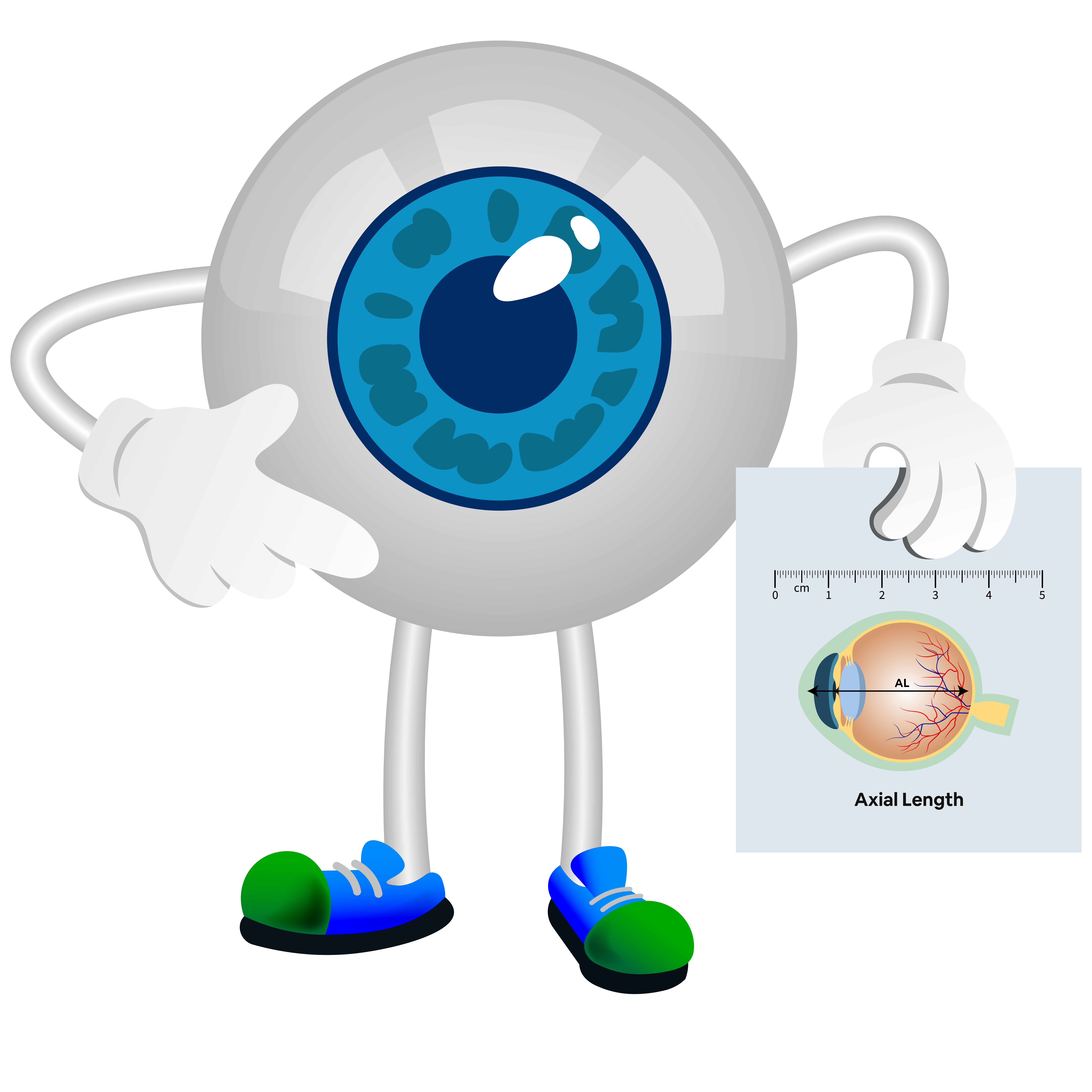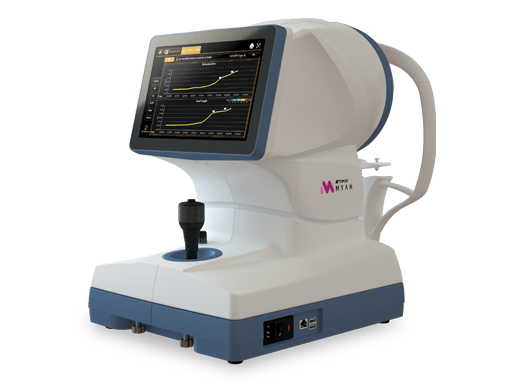
Why is it important?
-
- The axial length is essential for calculating the correct power of the IOL to be implanted during cataract surgery.
- Even small errors (e.g., 0.1 mm) in axial length measurement can lead to significant refractive errors post-surgery.
-
- The axial length, along with corneal curvature, determines whether someone is myopic (nearsighted), hyperopic (farsighted), or emmetropic (normal vision).
- Longer axial lengths are typically associated with myopia, while shorter axial lengths relate to hyperopia.
-
- In pediatric ophthalmology/optometry, it helps monitor eye growth to detect or track progression of high myopia or amblyopia.
-
- In conditions like axial myopia, frequent scans help assess risk for complications like retinal detachment or macular degeneration.


-
- OPTICAL BIOMETRY – Highly accurate, repeatable, and non-invasive method for tracking axial length.
-
- TOPOGRAPHY – Corneal topography with visit-to-visit comparison and white-to-white measurements.
-
- MEIBOGRAPHY – Visualize and capture images of the meibomian glands.
-
- PUPIL ASSESSMENT – Dynamic pupillometry assesses size and light reflexes of the pupil.
-
- LENS FITTING – Contact lens fitting tools including database of conventional RGP, Ortho-K lenses, and fluorescein simulation.
-
- ABERROMETRY MAPS – Simulate the effects of higher-order aberrations on visual quality.
Understand your eye health with precise Axial Length Measurement at Lenstudio Optometry in
White Rock & South Surrey. Crucial for myopia (nearsightedness) management in children and young adults.
Non-invasive and accurate. Learn more about axial length and its role in vision care.


